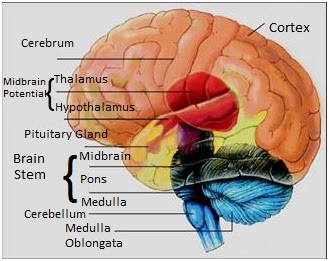The Hong Kong Minimally Invasive Brain & Spine Neurosurgery Centre has top specialists who treat complex neurological conditions caused by stroke, tumors, hernias, injuries, and traumas. Each day our skilled neurosurgeons perform dozens of complicated surgeries, saving people’s lives and helping them to restore their health. Thousands of patients go through the doors of our neurosurgery center every year which gives our excellent team of surgeons unparalleled expertise and ability to guarantee exceptional results to all of the patients.
If you are looking for an excellent neurosurgery clinic in Hong Kong, you have come to the right place. Fill in the online form to make an appointment with one of our specialist and start your journey to a healthy and happy life!
Initial stage of treatment is drug therapy for one or two months. The effectiveness of drugs in controlling the pain can help clinical diagnosis. But medications can only be a temporary solution, not a permanent cure for the true cause of trigeminal neuralgia that is: external factors compressing on the nerve and make it short-circuit.
Brain tumors can be subdivided into non-cancerous benign tumor and malignant cancerous tumor. If a tumor is originated within brain compartment ......
Tumors can develop in the vertebrae, nerves, and other tissue throughout your spine. Some spine tumors, such as astrocytomas, occur more commonly in children and adolescents......
Given the disease burden of strokes, prevention is an important public health concern. As stroke neurosurgeons, we do not want to treat stroke unless we are forced to do so for acute stroke ......
Brain tumors grow and compress normal brain tissue. Both benign and malignant tumors can cause swelling of the brain and raised intracranial pressure. Headache, dizziness....
|
|
|
MBBS (HK), FRCS (Edin), FCSHK, FHKAM (Surgery) Specialist in Neurosurgery Languages Spoken : English, Cantonese |
We are a medical group consists of experience registered nurses of neurosurgery training and experience neurosurgeons who subspecialized in skull base, spine and neurovascular surgery.
For decades, we have been treating stroke patients and patients with other brain and spine problems in both public sector and private sector in Hong Kong.
We also provide 24 hours emergency medical advice, assistance and treatments.
Apart from taking care local patients in Hong Kong, we also serve patients in Macau, Mainland China and other countries by providing emergency medical services, including Distant Tele-medicine Advice, international medical rescue and evacuation, arranging medical air-transfer or ground-transfer, medical escort, etc.
Most people interested in understanding brain disorders, but read or heard much of the information nor is getting the right knowledge to be reported, even many incomprehensible content. Moreover, medical advances, new facts were clarified. Brain is a very complex organ, still has many mysteries unsolved, for understanding brain diseases, to obtain the correct knowledge, we will be starting from the known brain systems.
Generally we find in the central nervous system can be divided into two parts: brain and spinal cord, which includes the brain, the brain stem and the cerebellum, while the latter includes 8 cervical, 12 thoracic, 5 lumbar spinal cord of spinal cord spinal cord and 5 sacral spinal cord. Relative to the central nervous system of the peripheral nervous system, including the 12 pairs of cranial nerves, and 30 pairs of spinal nerves, as well as the two most of the sympathetic and parasympathetic autonomic nervous system.
Divided into left and right hemispheres of the brain, brain hemispheres, the central part of the basal ganglia. Appearances hemispheres can be divided into several lobes, the front portion, about where the forehead known as frontal, is the top part of the parietal lobe, sleeping on a pillow where the occipital lobe, beneath the frontal lobe and parietal lobe is the temporal lobe, General commonly known as the location of the temple is located.
Lower end of cerebral hemispheres connected to the brain stem, brain stem control swallowing, breathing and heartbeats and other life-sustaining functions can be subdivided into the midbrain, Pons and medulla oblongata in three parts. Brain leaders handed out 12 pairs of cranial nerves cranial nerve nuclei of the message. Therefore, the medical uses of "brain stem death" as a standard to one people lost their lives.
The cerebellum is located in the posterior Fossa brain, the cerebellum in sensory perception, coordination and motor control plays an important role in it. Are connected by pathways, such as the sub thalamic nucleus and cortex of cerebellum, which dominate the coordinating role. Spinal cord extends from the brain stem and spine protection.
Vertebrae in the neck and lower back extensions, in the peripheral nerves of the spine white matter tracts, including sensory and motor neurons used to conduct sensory messages and motor commands.
